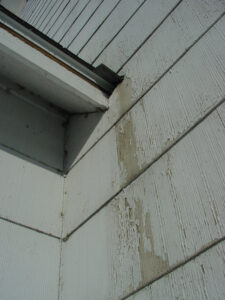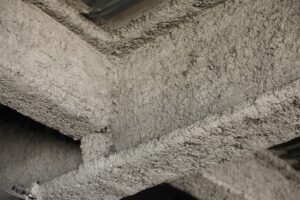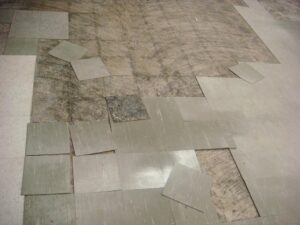Asbestos is a term used to refer to six naturally occurring silicate minerals . All are composed of long and thin fibrous crystal, each fiber being composed of many microscopic ‘fibrils’ that can be released into the atmosphere by abrasions and other processes. Asbestos is an excellent electrical insulator and is highly heat-resistant, so for many years it was used as a building material. However, it is now a well-known health and safety hazard and the use of asbestos as a building material is illegal in many countries. Inhalation of asbestos fibers can lead to various serious lung conditions, including asbestosis and

Archaeological studies have found evidence of asbestos being used as far back as the stone age to strengthen ceramic pots, but large-scale mining began at the end of the 19th century when manufacturers and builders began using asbestos for its desirable physical properties. Asbestos was widely used during the 20th century until the 1970s, when public recognition of the health hazards of asbestos dust led to its prohibition in mainstream construction and fireproofing in most countries. Despite this, and in part because the consequences of exposure can take decades to arise, at least 100,000 people per year are thought to die from diseases related to asbestos exposure.
Exposure to asbestos increases the risk of lung disease. Unfortunately, the risk can be worsened by smoking. In other words, the greater the exposure, the greater the chance of developing health risks.

Asbestos-related conditions can be difficult to identify. Healthcare providers identify the asbestos exposure and relate the conditions by taking a thorough medical history.
After a trained doctor suspects an asbestos related health issue, he or she can use numerous tools to help diagnose the issue. Some of these tools are physical examination, chest x-ray and pulmonary function tests. Your doctor may refer you to a specialist who can treat the disease caused by asbestos.

Three of the major health effects are :
Lung cancer
Mesothelioma
Asbestosis
For more information on these and other health effects of asbestos exposure. Click the following links.
Agency for Toxic Substances and Disease Registry, the National Institute for Occupational Safety and Health and the National Cancer Institute.
The fibers from asbestos can be released into the air just by doing home maintenance, simple repairs, demolition work, and remodeling. In other words, the fibers can only be activated by disturbing or damaging the area in a way where the particles and fibers are released into the air. So where can you find asbestos?

Asbestos can be found in locations where you least expect it. Here are the locations where you can find asbestos :
Attic and wall insulation containing vermiculite
Vinyl floor tiles and on the back of vinyl sheet flooring and adhesives
Roofing and siding shingles
Textured paint and patching compounds used on walls and ceilings
Walls and floors around wood-burning stoves protected with asbestos paper, millboard, or cement sheets
Hot water and steam pipes containing asbestos material or covered with an asbestos blanket or tape
Oil and coal furnaces and door gaskets with asbestos insulation
Heat-resistant fabrics
If you like more information regarding the laws behind asbestos. Click the following link. https://www.epa.gov/asbestos/epa-actions-protect-public-exposure-asbestos

In most cases, you really can’t tell whether any material contains asbestos. The best practice is to leave it alone and contact a trained asbestos professional to inspect your home. Some reasons why you are contacting a trained professional are :
You are planning to remodel your home
Your home has damaged building materials
A trained asbestos professional should take samples for analysis because there may be an increased amount of fibers released into the air and can cause serious health risks. If done incorrectly, sampling can cause fibers to react more than it was left alone. The state recommends not sampling yourself and to seek a trained professional. Furthermore, who are these trained asbestos professionals?
There are two types of accredited asbestos professionals that can be hired to remove all asbestos :
Asbestos Inspectors
Asbestos Contractors
Federal law does not require a person who inspect, repair or remove asbestos containing materials in detached single-family homes to be trained or accredited. However, few states and localities do require inspectors and contractors to be licensed.
For safety, homeowners should make sure the workers they hire are trained and accredited.
If you like more information on hiring a trained professional. Click the following link, https://www.epa.gov/asbestos/protect-your-family-exposures-asbestos for better understanding how you can safely spend your money and have the job done correctly!
To ensure safe and effective commercial asbestos removal from your premises is through a highly trained and licensed asbestos removal company. A Plan B Restoration Group INC. take all necessary precautions to protect and remove all asbestos!
Since many buildings are different. We do not offer a single solution to all buildings.
We will go through the correct and legal process in order to do any project to remove asbestos.
If building materials in your home aren’t damaged and won’t be disturbed, you do not need to have your home tested for asbestos. Material that is in good condition and will not be disturbed and be left alone.
Feel free to contact us for more information or quotes on removal of asbestos.
